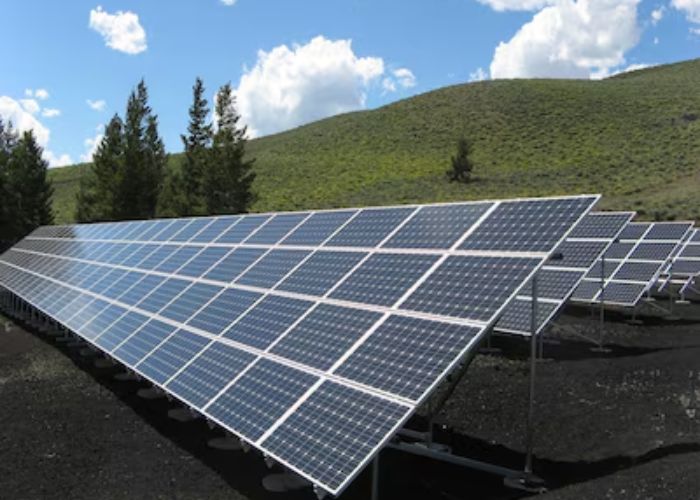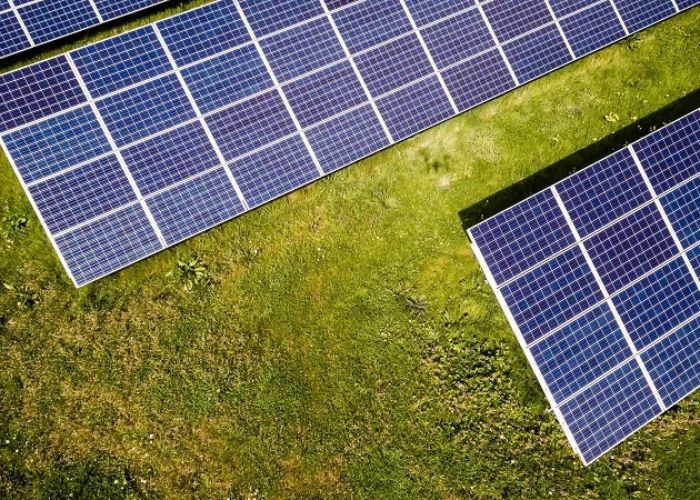I am always thrilled to hear about huge new solar and wind projects all around the globe since I am an energy writer with more than seven years of expertise reporting renewable energy advances. The Bhadla Solar Park in western India has grown into one of the world’s largest solar power plants, and it has lately captured my attention. Let’s read below about “Bhadla Solar Park – India’s Huge Solar Power Facility News”.
Location, capacity, development stages, and participating firms are all part of the Bhadla Solar Park overview that I will present in this article. Along with that, I will go over how this project helps India achieve its renewable energy targets and establishes the nation as an international solar power pioneer. I am able to offer fresh perspectives on this historic accomplishment thanks to my long history of reporting on solar energy projects.
Table of Contents
Bhadla Solar Park – India’s Huge Solar Power Facility News
Overview of Bhadla Solar Park
Towards the western edge of the Indian state of Rajasthan, not far from the Pakistani border, lies the Bhadla Solar Park in the Bhadla village section of the Jodhpur district. A utility-scale solar power plant would thrive in this dry desert region due to its high sun irradiation.
A number of commercial enterprises and the Solar Energy Corporation of India (SECI) have worked together to create the solar park in stages. It is one of the biggest operational solar parks in the world as of 2022, with an installed capacity of 2,245 MW.
The development phases are as follows:
- Phase I – Commissioned in 2016 with a capacity of 500 MW. Developed by Azure Power, Acme Solar, and SoftBank Energy.
- Phase II – Commissioned in 2017 with a capacity of 680 MW. Developed by NTPC, Adani, and SoftBank Energy.
- Phase III – Commissioned in 2018 with a capacity of 500 MW. Developed by SBG Cleantech and Mahindra Renewables.
- Phase IV – Commissioned in 2019 with a capacity of 600 MW. Developed by SoftBank, Azure Power, and Adani.
Significance for India’s Renewable Goals
An ambitious goal of the Indian government’s climate change mitigation plans is to achieve 175 GW of installed renewable energy capacity by 2022. A hundred gigawatts of solar power are a part of this.
Read More:- Itaipu Dam – Brazil/Paraguay Border’s Key Hydroelectric Plant
A key component in accomplishing these objectives will be large-scale solar parks such as the one at Bhadla. Over 2% of India’s anticipated solar capacity by next year is accounted for by Bhadla, with its 2.2GW capacity alone. To far, more than 8 million homes have been powered by the park.
Every time I talk to professionals in the solar sector, I hear about the enormous difference Bhadla has made. What Bhadla Solar Park has shown is that India is capable of producing renewable energy assets on a worldwide scale, according to Dr. Rahul Walawalkar, President of the India Energy Storage Alliance.

India’s Position as Solar Leader
India is now at the forefront of solar energy development, thanks to Bhadla and other big projects. Solar power in the nation increased 18-fold between 2014 and 2022, going from 2,650 MW to 49,000 MW. It is possible, according to experts, that India will achieve 55% more than its 2022 goal.
Solar parks on a grand scale have been a major factor in this expansion. Mercom India reports that solar parks are responsible for more than 40% of the country’s total solar capacity. Bhadla and similar parks provide developers with ideal circumstances and economies of scale.
Challenges and Future Outlook
Nevertheless, the integration of such a substantial surge in renewable energy into India’s antiquated grid infrastructure, which was initially constructed for fossil fuels, presents several obstacles. It is still a bottleneck, even though it is getting better.
Read More:- Top Hydroelectric Power Plants – Global Trends and New Ideas
During our recent conversation, Priya Sanjay, Director of the India Solar Power Association, stated that even when India achieves its 2022 target, the country will have to keep investing extensively in grid modernization. “Battery storage solutions will also be critical for balancing solar’s intermittent generation.”
According to newyorker, However, solar power has great potential to meet India’s increasing electrical needs in the future. By 2030, the nation might have more than 300 GW of solar capacity, according to experts. To lay the groundwork for this sustainable energy future, Bhadla and other massive solar parks are currently under construction.
Conclusion
I will keep following the development of Bhadla Solar Park and other vital projects in India’s renewable energy sector, drawing on my considerable first-hand knowledge of these initiatives, so that the country’s economy can be powered in a sustainable manner. The achievements at Bhadla showcase India’s determination to take the lead in the world’s energy transition. As other nations increase their investments in solar power, this one can serve as an example to follow. I hope you like reading “Bhadla Solar Park – India’s Huge Solar Power Facility News”.

Mohsen Ali is a Chemical Engineer with over a decade of experience in the energy sector. Specializing in power plant efficiency and sustainability, he brings expert insights to borderpowerplants.org. Mohsen holds a Master’s degree in Chemical Engineering and is dedicated to advancing sustainable energy solutions. Connect with him on Instagram or LinkedIn for more insights.
